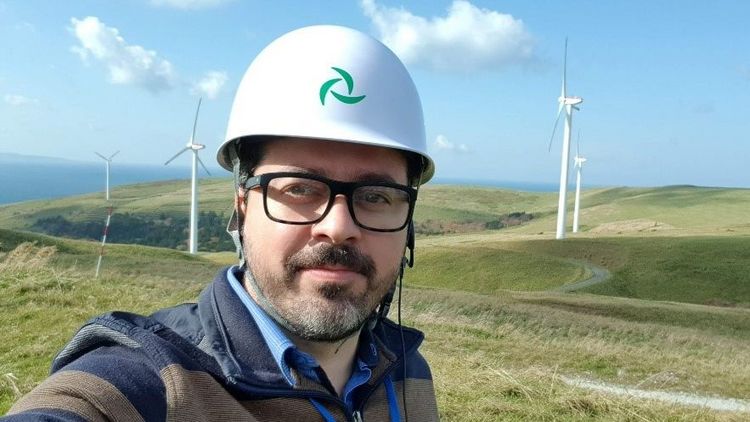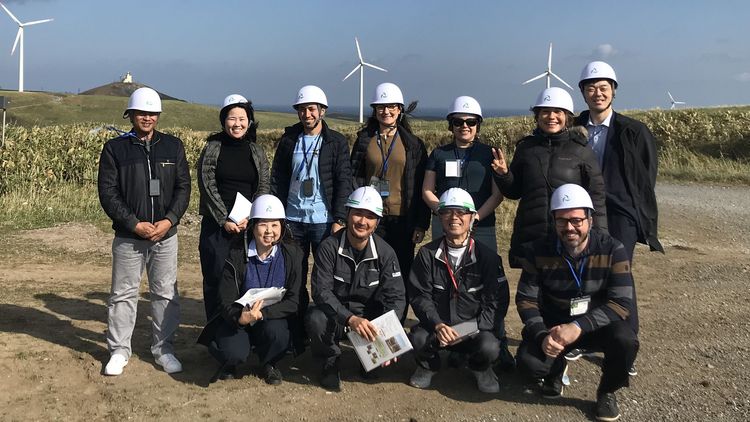The Workshop 'Adaptation of Small-Scale Renewable Energy as a Step for Climate Change' took place from October 1st to November 12th in 2019. International participants from Myanmar, Tajikistan, Chile, Brazil were invited (info-flyer: https: // www .jica.go.jp / brazil / portuguese / office / courses / c8h0vm0000f2k57x-att / anexx.pdf)
Japan always gets my attention for its incredible resilience by facing natural disasters. No matter how strong the earthquake is, Japan always recovers itself. The Japanese response facing the Great East Japan Earthquake (2011) is something unique, especially in terms of adaptation efforts in order to replace nuclear power stations in such a short period of time.
From October 1st to November 12th, in 2019, I had this incredible professional and personal experience in Japan, by taking part of a short training course related to small-scale renewable energy systems. The program itself, organized by the Japan International Cooperation Agency, aimed to facilitate participant’s understandings about Japanese experience regarding small-scale renewable energy solutions.
The course was carried out in Hokkaido, the northern-most island of Japan. In Hokkaido, emissions due energy consumption is mainly caused by domestic heating during winter, long distances crossed by vehicles due to dispersed population, and a curious habit of letting cars engine turned on even when there is nobody inside (for going to a supermarket for example). Many local authorities and private sectors have been making efforts in order to increase the adoption of renewable energy solutions by taking advantage of plentiful regional resources.
In terms of Japanese successful cases, I would like to highlight some projects that aim to improve citizen’s quality of life by means of small-scale renewable energy systems. Social concerning about global warming is the main driver to embrace local communities, small companies, NPOs and local government in projects like: joint power plants organized by citizens and local communities (also described as solar or wind power communities), the solar sharing concept, and business models that promote a cascade use of energy.
Solar and wind power communities involve residents through the adoption of sustainable solutions, which simultaneously brings social and economic benefits. Figure 1 shows a small-scale solar system in Shiga, Hokkaido, which was implemented due to 300-dollar donation per volunteer. Profits provided by a Feed-in tariff scheme is then annually used in order to reward donators with generous souvenirs (Figure 2) made by residents.
Solar-sharing concept relies on the idea of sharing the same land for agriculture and PV panels (as shown in Figure 3). In projects with a lack of land availability, high PV arrays may allow other land uses and then increase profits of an agriculture business for example.
An example of cascade use of energy was observed in the Shikaoi Environment Conservation Center, which is responsible to collect and treat rural and urban organic waste. Main outputs of this system are biogas (which is used to generate electricity and hydrogen), heat (used to raise caviar and mangoes) and fertilizer (which is shared with local farmers). The reason behind growing mangos in a greenhouse inside a waste treatment center is that some species are locally sold by approx. 200-american dollar during winter.
CURRENT JOB POSITION - Bruno Xavier de Sousa:
Infrastructure Official, Secretariat of Applied Technologies, Ministry of Science, Technology, Innovation and Communication
Currently, I’m responsible for technical analysis about projects regarding applied technologies related to sustainable development.







